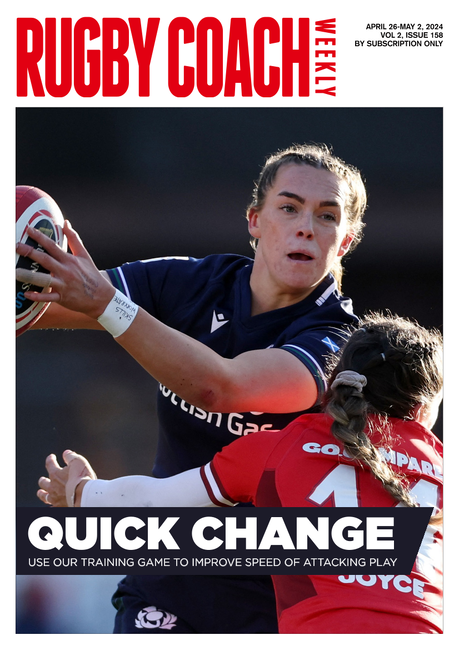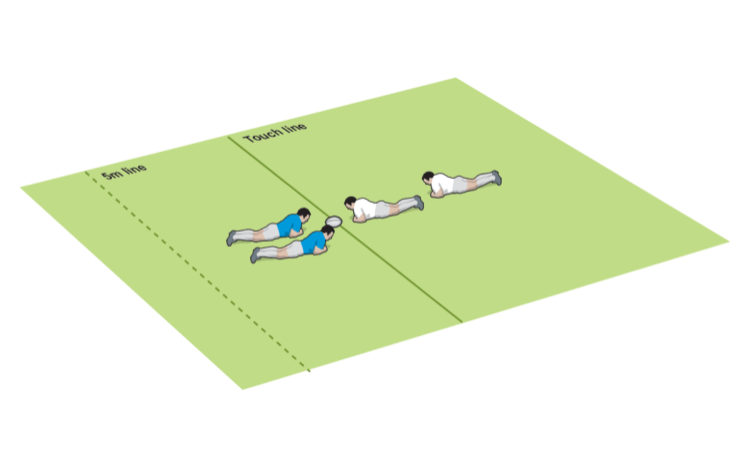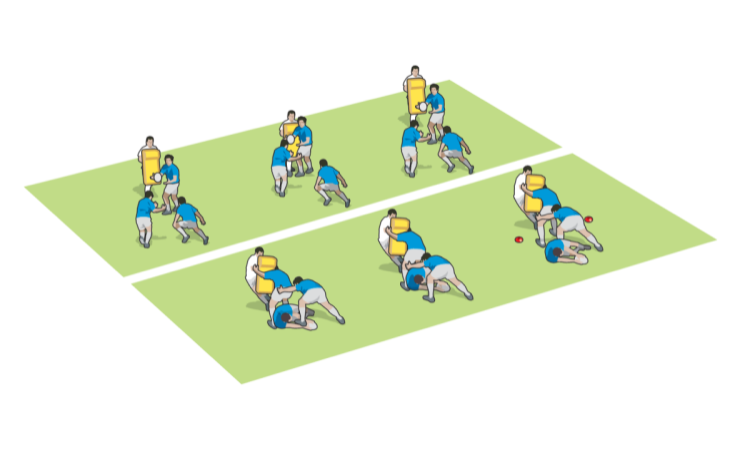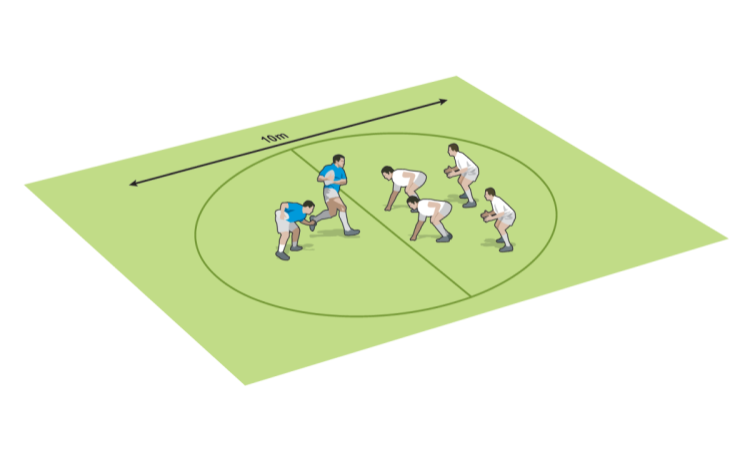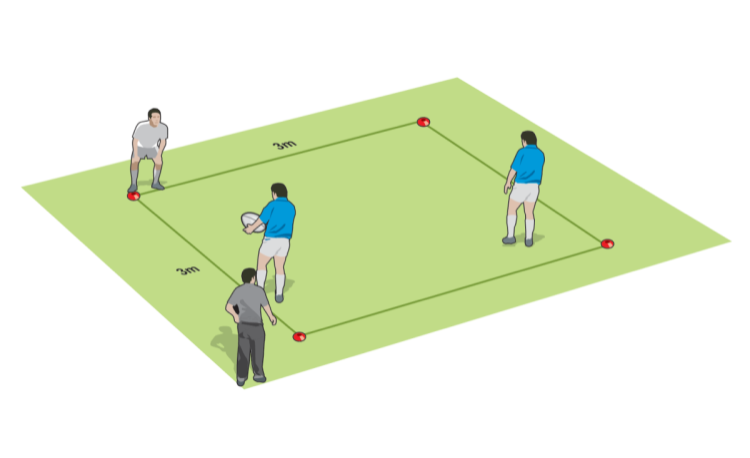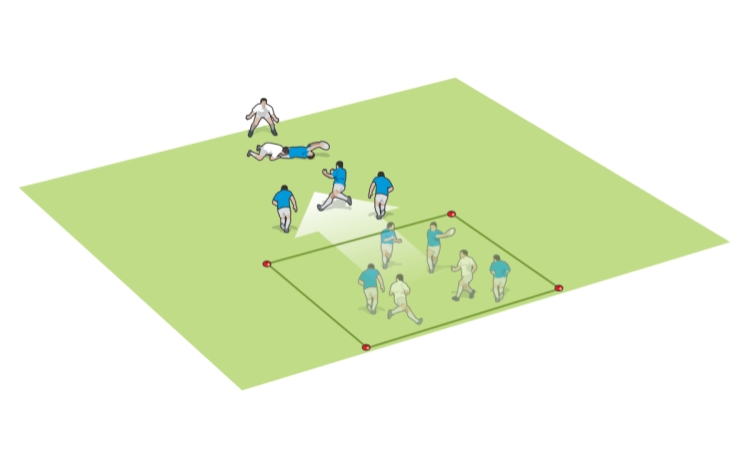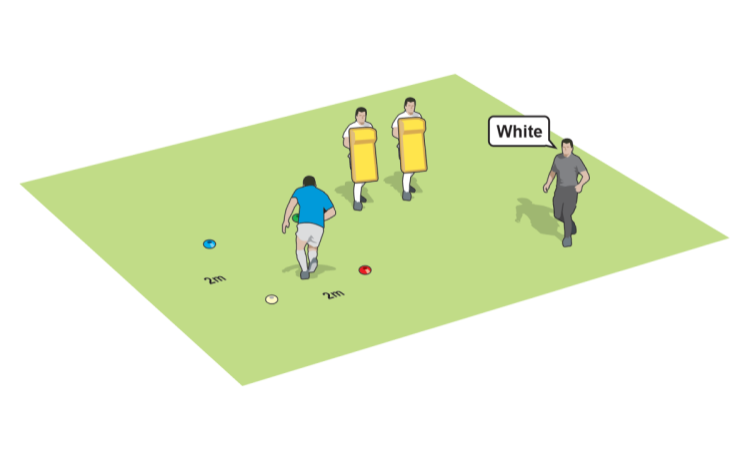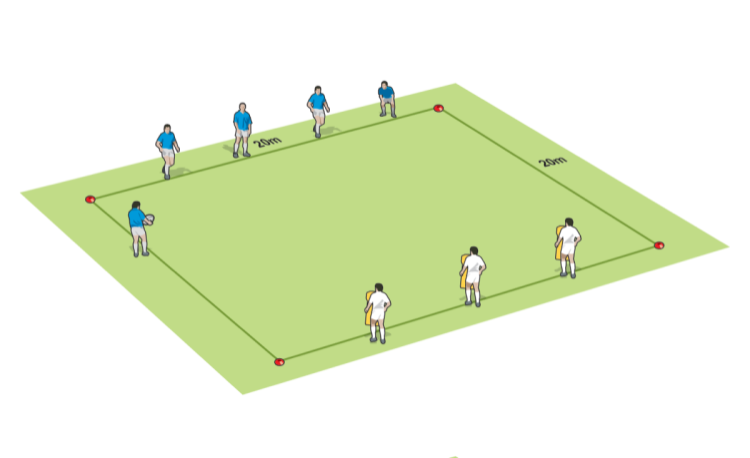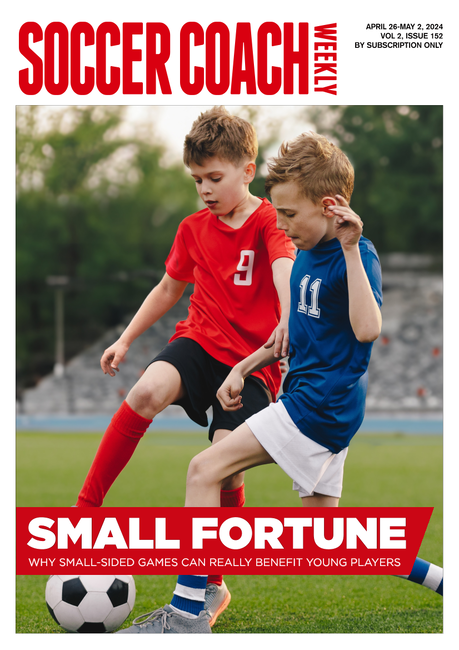You are viewing
1 of your 2 free articles
Rugby coaching session to practise attacking mauls
Rucking & Maulingby Dan Cottrell
What you tell your players this rugby coaching session is about
Warm-up: Set up a 3 v 1 maul in a 5m square box. At walking pace, the three players have to move the maul from one corner to another without leaving the box.
Rugby drill: Set up a 5m box within a 15m square. Three players in the box pick up a ball and drive towards the side of the square. Three defenders in the square prevent this. They are not allowed in the box. The ball can only be transferred by maul, with no passing. When you shout "CHANGE", the teams swap around.
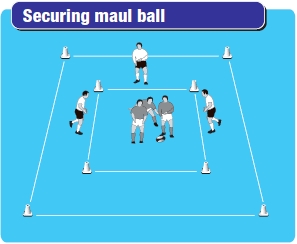
Developing the rugby coaching session
The mauling training session can be developed as follows.
Click here for more mauling tips and skills.
- Retaining possession and going forward in a maul.
- Committing defenders to create space elsewhere.
- Working together and communicating in a maul.
- The ball carrier should go into the contact on his feet, turned slightly, with the ball on one hip and carried in one or two hands.
- The second player into the contact should drive in and put his hands on the ball, so there are now three or four hands on the ball. The next player to arrive should drive in and work the ball towards himself.
- A successful maul is due to the collective effort of all the players involved. Communicate to work together.
Warm-up: Set up a 3 v 1 maul in a 5m square box. At walking pace, the three players have to move the maul from one corner to another without leaving the box.
Rugby drill: Set up a 5m box within a 15m square. Three players in the box pick up a ball and drive towards the side of the square. Three defenders in the square prevent this. They are not allowed in the box. The ball can only be transferred by maul, with no passing. When you shout "CHANGE", the teams swap around.

Developing the rugby coaching session
The mauling training session can be developed as follows.
- Add an attacker and ensure at least one attacker is not attached to the maul.
- Allow the defenders to tackle inside the smaller box before the maul has formed, thus encouraging players to stay on their feet.
- Allow the attackers three attempts, to "score", but move the "try line" each time.
- "Three or four hands on the ball until it can be moved back." (That is, two players drive in together, holding onto the ball.)
- "Take short driving steps, not walking."
- "Keep low body positions."
- "Ball carrier - tell the others who you are."
- "Get the ball to the back."
Click here for more mauling tips and skills.
Newsletter Sign Up
Coaches Testimonials

Gerald Kearney, Downtown Las Vegas Soccer Club

Paul Butler, Florida, USA

Rick Shields, Springboro, USA

Tony Green, Pierrefonds Titans, Quebec, Canada
Subscribe Today
Be a more effective, more successful rugby coach
In a recent survey 89% of subscribers said Rugby Coach Weekly makes them more confident, 91% said Rugby Coach Weekly makes them a more effective coach and 93% said Rugby Coach Weekly makes them more inspired.
Get Weekly Inspiration
All the latest techniques and approaches
Rugby Coach Weekly offers proven and easy to use rugby drills, coaching sessions, practice plans, small-sided games, warm-ups, training tips and advice.
We've been at the cutting edge of rugby coaching since we launched in 2005, creating resources for the grassroots youth coach, following best practice from around the world and insights from the professional game.
More from us
© 2023 Rugby Coach Weekly
Part of Green Star Media Ltd. Company number: 3008779
We use cookies so we can provide you with the best online experience. By continuing to browse this site you are agreeing to our use of cookies. Click on the banner to find out more.


